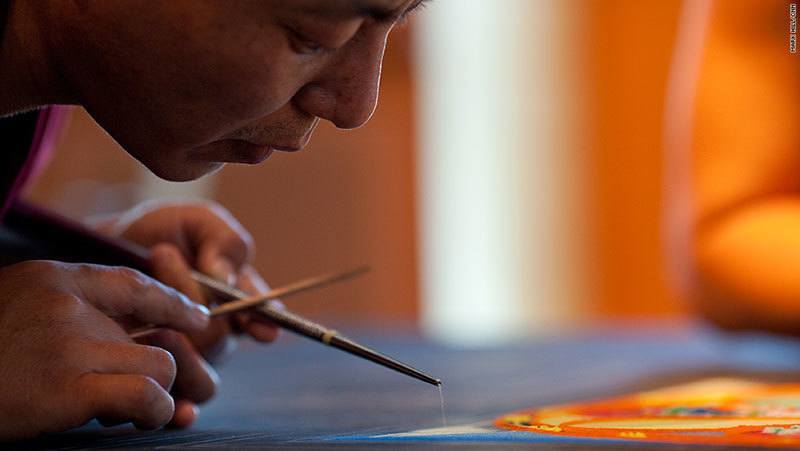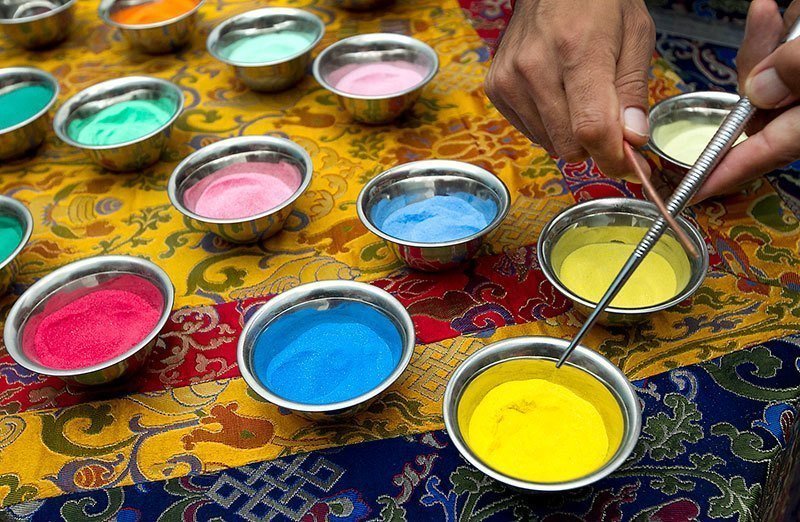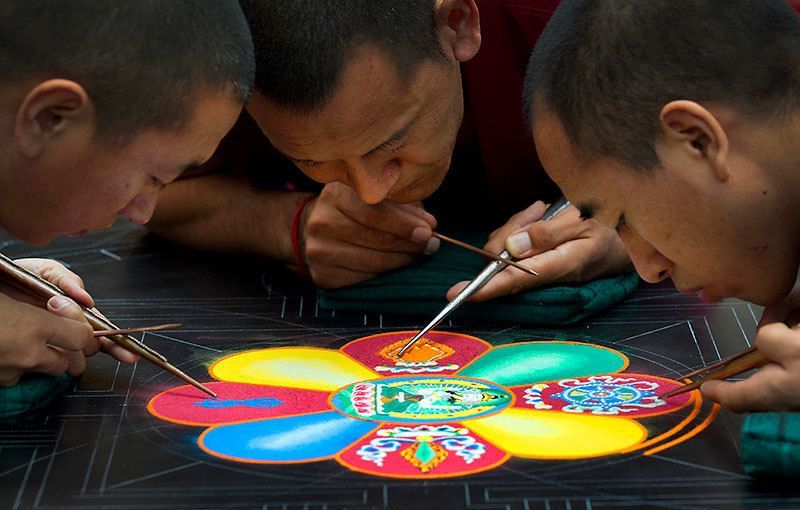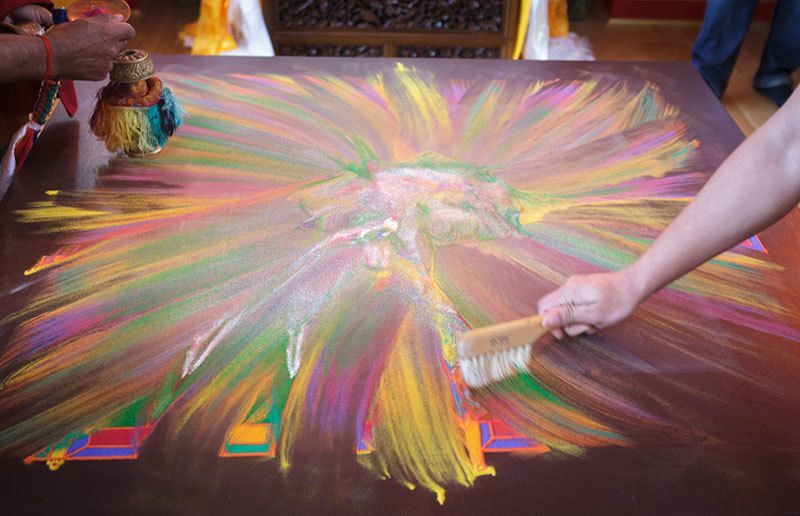
Source: CNN
Millions of sand particles must be carefully poured onto the outline using a metal funnel that’s called a chak-pur (seen above). The monk must hold it in one hand while using his other hand to run a metal rod over the grated surface. This process makes the chak-pur vibrate, allowing the sand to flow from it like water. While monks usually use sand from pulverized colored rocks (as opposed to dyed sand) to create the sand paintings, they have also been known to use flowers, gems, herbs and grains.

Source: Collective Vision

Source: Collective Vision
Although it takes days or even weeks to finish a single sand painting, each piece of artwork is destroyed as a final symbolic act. Once a mandala is completed, the monks must then dismantle it by following a specific process in which parts of the sand painting are ruined in a particular order. Once the sand has been brushed together, it is then mixed with water—often dispersed into the ocean—to fully symbolize the impermanence of life and a non-attachment to material objects. Thankfully, today’s mandalas are captured in photographs before being completely destroyed.

Source: Pixshark

Source: Alan Peto





